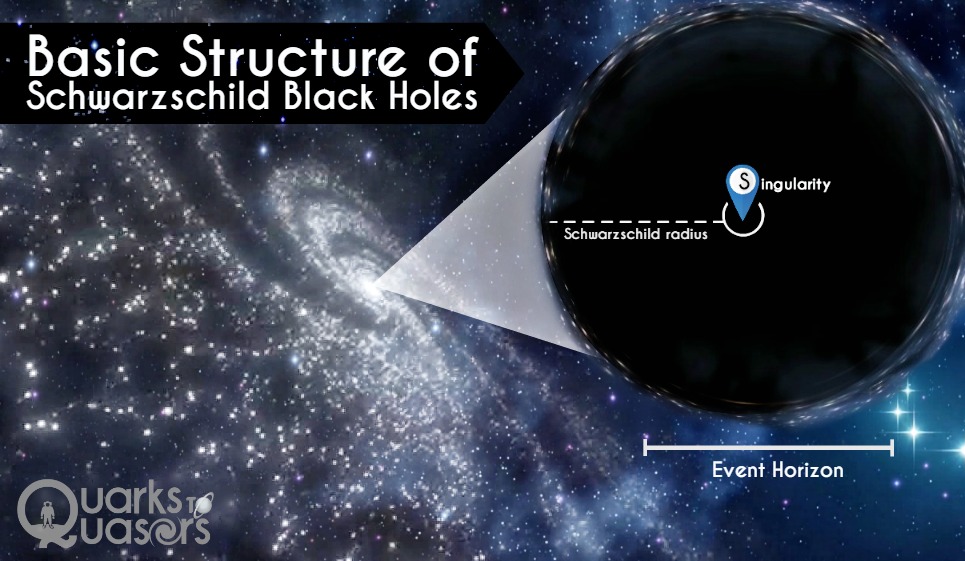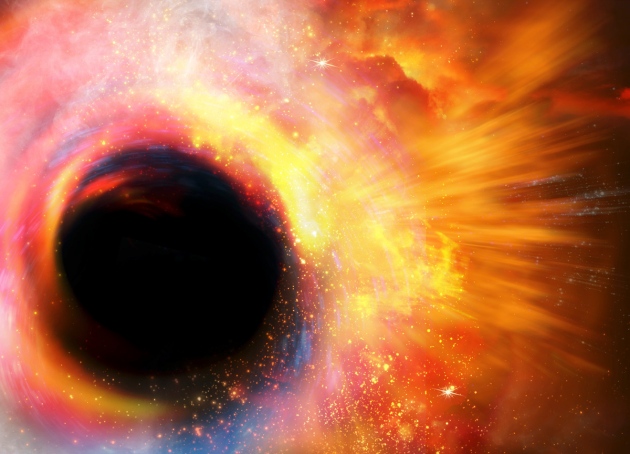

As some really smart person once said, “black holes are where God (or the Flying Spaghetti monster, maybe) divided by zero.” It was probably meant to be a joke, but there’s certainly a kernel of truth to it. Surprisingly enough, weird things do happen to our equations when you apply them to the interior of a black hole—indeed, it’s something to the effect of dividing everything by zero. So, other than being the source of a great joke, what are black holes?
The term was coined by Dr. John Archibald Wheeler. However, Dr. Wheeler wasn’t the first person to hypothesize a black hole, although commonly associated with him, neither was Einstein (though his equations are essential to the black hole theory). Rather, in the 18th century, John Michell and Pierre-Simon Laplace were the first to propose the existence of massive objects with gravity fields so great that nothing—not even light—could escape.
Later, in 1916, Karl Schwarzschild published the first modern characterization for a black hole, which he based on Einstein’s theory of general relativity. His work gave rise to the well-known Schwarzschild radius. It refers to the radius that extends from the center of an object, within which, if the object was compressed, the escape velocity would equal the speed of light. When the radius of an object is equal to or less than the Schwarzschild radius, it condenses to an infinite density and becomes a black hole.
If that didn’t make sense, consider this: If the radius of an object is equal to or less than the Schwarzschild radius, it turns into a black hole. Take the Sun, for example. If you were to compress all of its mass of the sun into a sphere with a two-mile radius, it would turn into a black hole. Earth, on the other hand, would become a black hole if you concentrated all of its mass into a sphere about 9 millimeters across (roughly the size of a marble).
Of course, you couldn’t compress either object into a black hole using any traditional method, therefore the simpler technique works just fine. It generally involves the core collapse of a massive star, however it’s important to note that not all massive stars spawn black holes. In fact, one of three things can happen: either the star becomes a black hole, a neutron star or a pulsar (a type of neutron star that emits large quantities of light and radiation). The difference is, some stars collapse within the Schwarzschild radius, whilst the collapse is sometimes stopped by something called neutron degeneracy.
Black Hole Highlights:
Why can’t light escape from a black hole?
First, imagine that you have an object and you throw it into the air. If it is traveling at a speed less than the escape velocity—the speed something must travel to break free of an object’s gravitational hold (like an Earth-based rocket bound for the moon)—it will slow down and fall back to earth. However, if you throw it faster than the escape velocity, it will keep going forever—to refresh you on the laws of motion, they say that an object at rest will stay at rest until an outside force acts upon it, and an object in motion will remain in motion unless something interferes—but it will still slow down. This happens because, as this object moves away from the Earth, it is pushing through a gravitational field and losing energy.
Light is no different. When it exits a gravitational field, it too loses energy; but because the speed of light is constant, it can’t slow down and thus this energy must be lost in some other way. A photon loses energy in its wavelength and undergoes a gravitational redshift. When light is emitted from inside the event horizon of a black hole, its wavelength gets infinitely long and the photon basically redshifts itself out of existence (think about it like the wavelength getting stretched really, really long).
What is a Singularity?
The center of a black hole is also called a “singularity.” At this point, spacetime has an infinite curvature and the laws of physics break down. Because the singularity is within the Schwarzschild radius, it can never be observed from the outside.

Physicists have also theorized the existence of a naked singularity, which is a singularity without the event horizon (meaning it could be observed); so far, no one has observed one.
What Happens Inside a Black Hole?
Once you reach the event horizon, the escape velocity becomes greater than the speed of light, it is therefore probable we will never know what happens inside the event horizon. Not only can light not escape, but information cannot be communicated across the Schwarzschild radius.
When working inside the event horizon of black holes, we do, however, assume the laws of physics still hold true and our equations are still valid (even though they tend to blow up). Even though extremely weird things happen within black holes, according to our mathematics, there is no reason to believe the laws of physics work any differently, even though we have to work around things like dividing by zero.
What if the Sun Became a Black Hole?
If the sun were replaced with a black hole equal in mass to the Sun, Earth would not be sucked in. In fact, Earth’s orbit would remain virtually the same, which goes back to a major black hole misconception.
Many believe black holes are cosmic vacuum cleaners that destroy everything, but that simply isn’t the case. A black hole’s strength is directly proportional to its size. It can only consume objects that come close to its event horizon, which increases alongside the object itself.
However, if the Sun did become a black hole, we’d have more pressing concerns. A Sun-less sky would render photosynthesis impossible, and all the organisms that rely on it for energy would die—taking most of our food source with them. Life, shall we say, would be rather interesting (while it lasts).
Can We See Them?
Black holes, as the name suggests, emit no light in the visible portion of the electromagnetic spectrum, therefore scientists have to rely on other methods of detecting them. This almost always includes looking for accretion disks; One forms when more matter gathers around a black hole than it can swallow, it ultimately builds up like a backed up pipe. Immense gravitational strain and friction makes the material hot and luminous—they also make the disk emit a lot of x-radiation.
Other ways of finding black holes involve x-ray binaries, gravitational lensing, and observing the gravitational interactions between visible matter and the black hole.